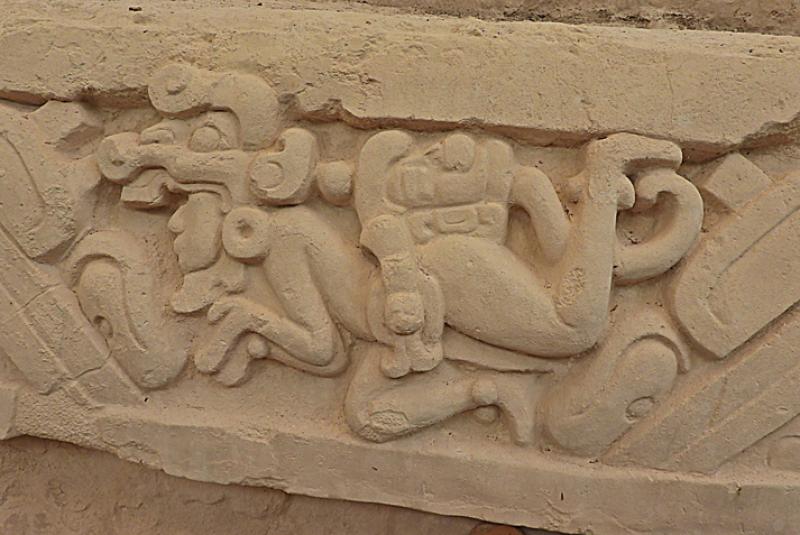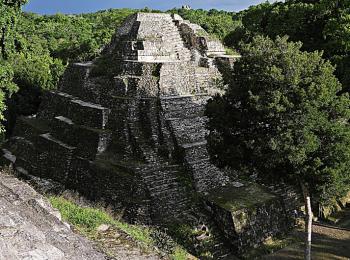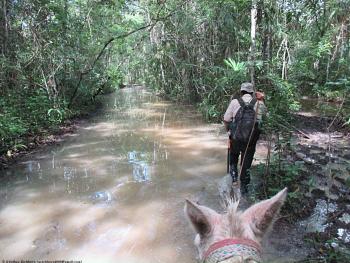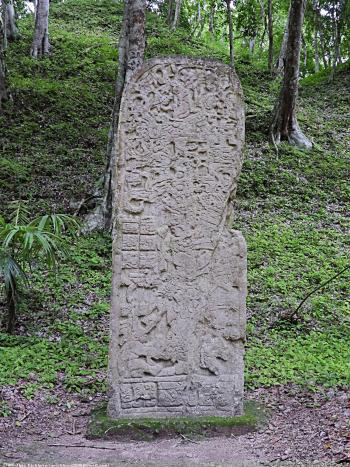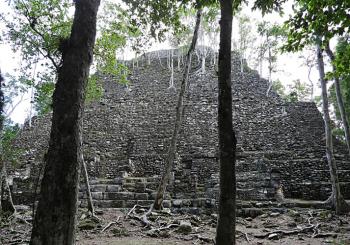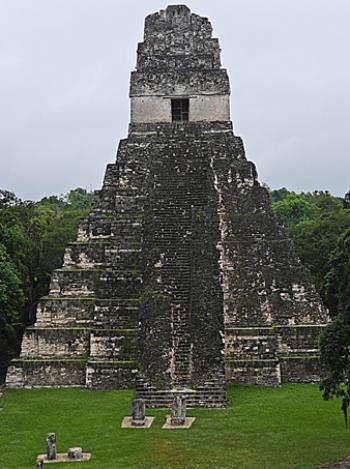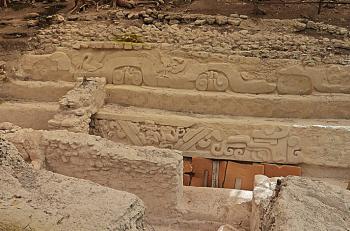Mayan remnants in Guatemala
This item appears on page 14 of the January 2021 issue.
The focus of my trip to Guatemala in November 2019 was remnants of the Maya.
Organized by Maya Travel (Antigua, Guatemala; mayatravelantigua@yahoo.com, www.travel-maya.com/en), my 10-day private tour cost $3,155 and included a guide. All food was included during a 5-day trek to El Mirador; otherwise, breakfast was included daily but not lunch or dinner.
Maya Travel was very responsive when I wanted to modify the itinerary, and everything worked out well. I visited three Mayan sites: Yaxha, Tikal and El Mirador.
I flew into Guatemala City, where I was picked up by my guide and taken to the hotel. The next morning, we started our drive to Cobán. Leaving the city, at one point traffic stopped and we had to wait about an hour before we could continue. A landslide had blocked the road, and there was only one lane for traffic.
On the way to Cobán, we stopped at the Orquigonia Cobán Guatemala Botanical Reserve, a private nature reserve dedicated to rescuing and preserving orchids. A guided tour through the orchid garden was very informative.
We left early the next morning to go to the Reserva Natural Ranchitos del Quetzal to look for quetzals. I saw several; they’re magnificent birds. The Aztecs and the Maya considered them to be sacred.
After our search for quetzals, we drove to the Cuevas de Candelaria Mucbilhá, a cave with nice speleothems (mineral-deposit formations). It was a 20-minute drive on a dirt road from the main highway and then a 20-minute walk to the cave. The walk through the cave lasted 45 minutes. The air was hot, with the humidity almost 100%. With all the walking, I was soaking wet just from sweating.
We then drove back through Cobán and on to Lanquin, the last part being on a pretty bad road and taking about two hours. From the lodge in Lanquin, I was driven in a 4WD vehicle about 45 minutes to the lodge in Semuc Champey, where I stayed for one night. The next day, we drove back to Cobán.
I felt there was not much to see or do in the Semuc Champey natural monument. I did not find it worth the long drive over bad roads, and I cannot recommend visiting it.
Following another night in Cobán, we continued north to Flores, a little town on an island in Lake Petén Itzá. After checking into a hotel, we drove 1½ hours to my first Mayan site in Guatemala: Yaxha.
The Yaxha tour culminated in watching the sunset from the top of a pyramid. Just as we arrived back at the car, it started to rain heavily, continuing to do so throughout the long drive back to Flores.
Leaving at 3:30 a.m. the next day, we drove 1½ hours to the second Mayan site, Tikal, to watch the sunrise from one of the pyramids. It was foggy, so we didn’t see the sunrise, but the tour through Tikal was great.
My biggest adventure in Guatemala started the next day — a 5-day jungle trek to El Mirador! This site’s claim to fame is La Danta, one of the world’s largest pyramids.
I was picked up at the hotel for a 2-hour drive to Carmelita. Once there, there was no road to El Mirador, so we had to either hike or ride a mule. (There were also short helicopter tours available.)
I had originally been scheduled to hike, but the person who picked me up said I could ride for an extra $60. I took advantage of that and am glad I did! I would have never been able to make the hike.
I ended up riding a mule for a total of 20 hours, five hours on each day of trekking. Our group consisted of my guide, a cook and me. We had three mules: one for me, one for the cook and one for supplies. My guide walked the entire time. On the first day, my guide led my mule; on the other three days, my mule was tied to either the mule carrying the cook or the pack mule.
It took two days to get from Carmelita to El Mirador. We went about 10 miles the first day and 17 miles the second day.
The first day, the forest was knee-deep under water with ankle-deep mud everywhere. It was tough going. We stayed at a camp at El Tintal, which has a fairly large Mayan pyramid that hasn’t yet been excavated. It was basically a big hill overgrown with trees, but we did the obligatory sunset hike to the top of a pyramid.
The second day’s trek started early, with a wake-up at 5 a.m. After arriving in El Mirador after the second day’s ride, I walked around the site for a bit.
That evening, we did a sunset trip to the pyramid known as El Tigre. I cut this excursion short and went back to camp before the sun set in order to negotiate the steep climb down from the pyramid during daylight. I was lucky because as soon as I reached the camp, it started raining heavily.
We toured El Mirador the next morning. The main attraction, La Danta, was quite impressive. A few other pyramids had been partially excavated, but most of the site was covered with forest.
My guide suggested another sunset trip in the afternoon, but I decided against it. That turned out to be a good decision, since, like the day before, it started to rain in the afternoon.
The next day we started early again, rising at 5 for the ride back to civilization. We spent another night at the halfway camp and arrived back in Carmelita around noon. After another 2-hour drive, I spent one more night in Flores before flying out of Guatemala the next day.
This multiday jungle trek was quite an adventure. The trip was 27 miles each way and pretty tough going. I’m glad I made the trip, but I wouldn’t do it again.
November is the tail end of the rainy season, and it rained a lot, but I was incredibly lucky, as it never rained during my excursions. It did rain every afternoon during the trek to El Mirador but never while I was on the mule and never while I was walking through the Mayan sites.
If you’re interested in Mayan remnants, Guatemala is worth a visit, especially Tikal.
GÜNTHER EICHHORN
Scottsdale, AZ

